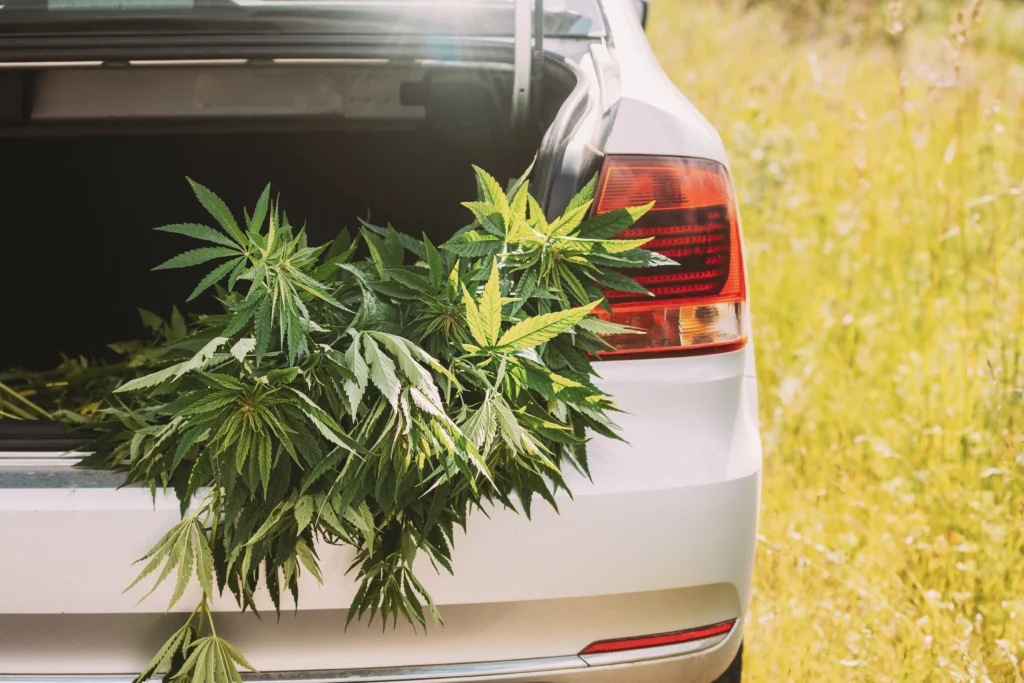5 Regulation Changes for California Cannabis Delivery Services
Are you up to date with the latest cannabis delivery service regulations?
The onslaught of cannabis regulation changes has made the market difficult to navigate in a fully compliant way – especially as a cannabis delivery service. If you feel as though there are adjustments being made on a daily basis, you’re in the same boat as the rest of the industry! Lucky for you, we’ve broken down the 5 biggest changes that your delivery service needs to know about in order to stay compliant and be successful!
1. Cannabis Delivery Driver Kit Values
The initial emergency regulations that were proposed by the Bureau limited the amount of product capable of being transported to a mere $3,000 in retail value. This not only limited the amount of product that a delivery driver could carry in their delivery kit, but resulted in an inefficient way of making deliveries.
The Bureau has since increased the amount from $3,000 to $5,000. This means that the total retail value of the products that your delivery drivers are carrying must not exceed the total amount of $5,000 at any given time. More importantly, is the new regulation which mandates that drivers must not have more than $3000 worth of product in their vehicle without an order being received and processed prior to a driver being dispatched.
This increased limit means that your drivers are able to carry a larger variety of products in their driver kits, freeing up the options that your customers have made available to them. It also means that your drivers can stay out longer to complete transactions with a fully stocked car that doesn’t jeopardize the ability to make deliveries on-the-fly.
Another aspect of cannabis deliveries to consider is the amount of time your staff is allowed to be away from the dispatch location in-between deliveries. Drivers are allotted a 30-minute window in-between drop-offs before having to return to the primary dispatch center.
What we can suggest is keeping to the 30-minute limitation that is allowed for stops in-between deliveries and orders placed.
Stay under the $5,000 limit and you’re good to go!

2. Securing Goods for Cannabis Delivery
Keep under the required limit for both compliance & safety reasons.We’d be lying if we said that security wasn’t a major concern of the regulated market. Adjusted regulations now mandate that in order to properly secure cannabis goods for your delivery drivers, the goods must be in a locked container within the vehicle and be accessible only to the driver of the vehicle being used to make deliveries.
The Bureau has made it clear that the trunk of the car is to be considered a part of the vehicle that can be used to fulfill this new security requirement. There are no specifications on the type, size, or material of container that can be used.
As a delivery service, it may comfort you to know that there are requirements on vehicle alarm systems and a lack of requirements for any specific lock box to be used. You can rest assured that you have freedom in choice of lock boxes or containers and know that in the case of your vehicle being tampered with, an alarm system will draw attention to it.
Remember: drivers need to use the trunk or a lock box to secure goods and all vehicles must have an alarm system.
3. Reporting Sales On-the-Fly with a Live Ledger During Delivery
Cannabis delivery sales should be reported as they happen for optimal results.[/caption]
Sales should be reported as they happen.
To successfully stay within compliance, all sales must be recorded in-between deliveries that are made by drivers. In addition to this, there must be a live inventory adjustment that takes place in-between sales. This means that after each delivery made, your driver must adjust the digital or physical ledger that is carried with them on every delivery.
The ledger is essentially a document that lists all cannabis products in your driver’s possession at any given time. It must include the type of cannabis product, retail price, brand, CCTT number, and appropriate weight, volume, or number of total pieces per package.
Inventory management and reporting to METRC is a huge concern of the Bureau’s for all sectors of the cannabis industry. Delivery services looking to be effective and in this market for “the long run” should make sure that their employees are trained with the adequate skillset to fulfill the requirement.
It’s as simple as making a delivery, reporting the sale to METRC, and updating the delivery ledger to reflect changes made in real-time inventory. Having a mobile point-of-sale system that automates this definitely works to your advantage.
READ: 5 Questions Customers Will ASk That Your Delivery Service Staff Should Be Able to Answer

4. Real-Time Tracking of Cannabis Delivery Drivers
Tookan makes two-way communication between consumers & delivery service drivers a breeze! Keeping safety in mind, the Bureau has made it a mandatory requirement to be able to locate and track delivery drivers as they are completing their duties. This means that real-time tracking of your drivers has taken an advanced step towards making your delivery service look like the Uber Eats of cannabis.
It also means that with a proper delivery management system, you can communicate in real-time with your drivers and your customers can get an accurate idea of when their product will arrive. In addition to live tracking, dispatch managers must be able to pull up a real-time reflection of the location of each driver as well as the estimated time that each destination is reached. A destination log of each planned drop-off as well as the recorded time with each transaction is one way that deliveries can be made to be more efficient while collecting data that can be used to increase the overall efficiency of your cannabis deliveries.
With a destination log and inventory management system that places a time stamp on everything and can locate your drivers in real-time, you’re sure to keep the Bureau on your side!
5. Making Additional Stops Comes with Limitations for Cannabis Delivery Drivers
There’s a penalty for making additional stops!
Your delivery service drivers are allowed to make momentary stops for each of the following: Fuel, Vehicle Repairs, & Rest for any “reasonable” amount of time.
Although the first two are clearly defined, the amount of time allotted for rest is rather murky. Making additional stops for lunch, to visit a friend, or make a delivery that isn’t on your ledger is putting your toes in hot water—don’t do it!
Related: 7 Questions to Ask When Purchasing Software for Your Cannabis Delivery Service
Efficient Cannabis Deliveries are Compliant Ones!
Cannabis delivery services race against the clock to satisfy customers!
New delivery service regulations aren’t overly complicated and making necessary adjustments to your operation should take a top priority if you want to become a household name in delivery services available. We’ll do our best to keep you up to speed as these regulations are finalized, but you know just as well as we do that things could change at the flip of a switch!
Keep up-to-date with the changes as they occur and subscribe to our blog below!
